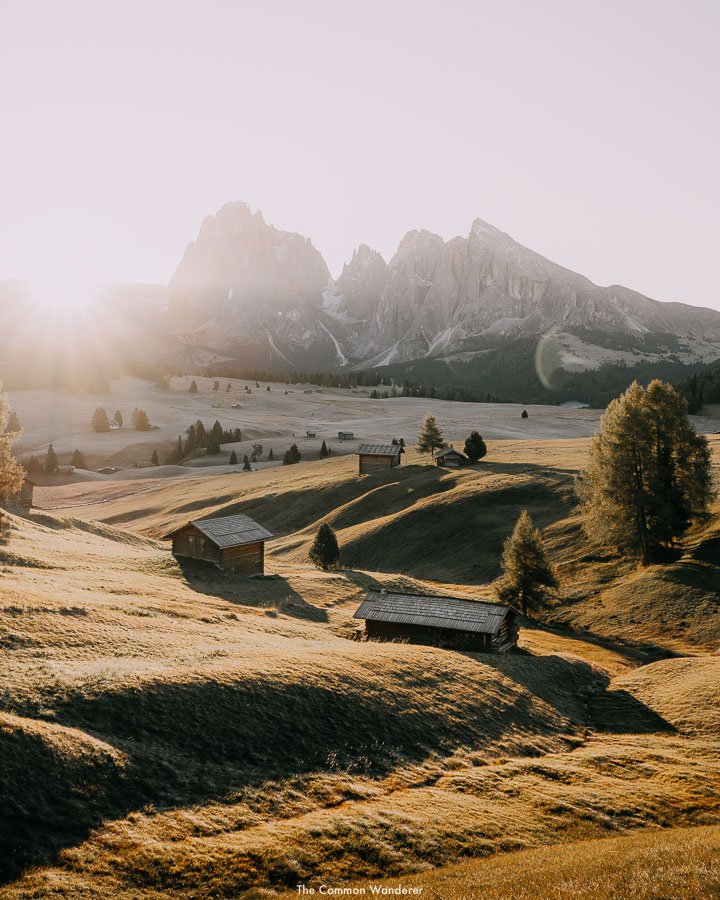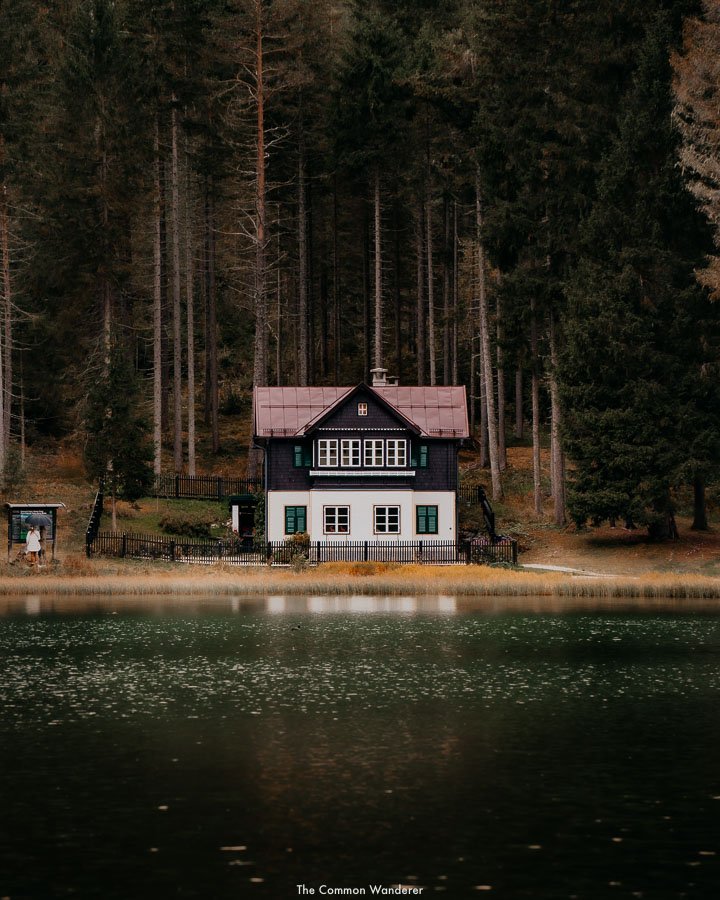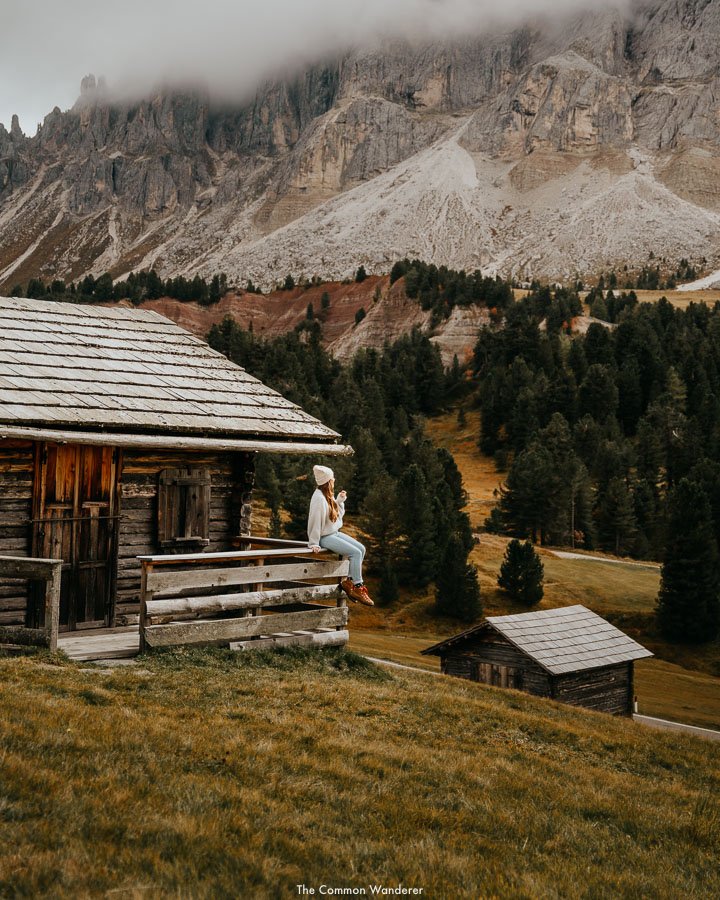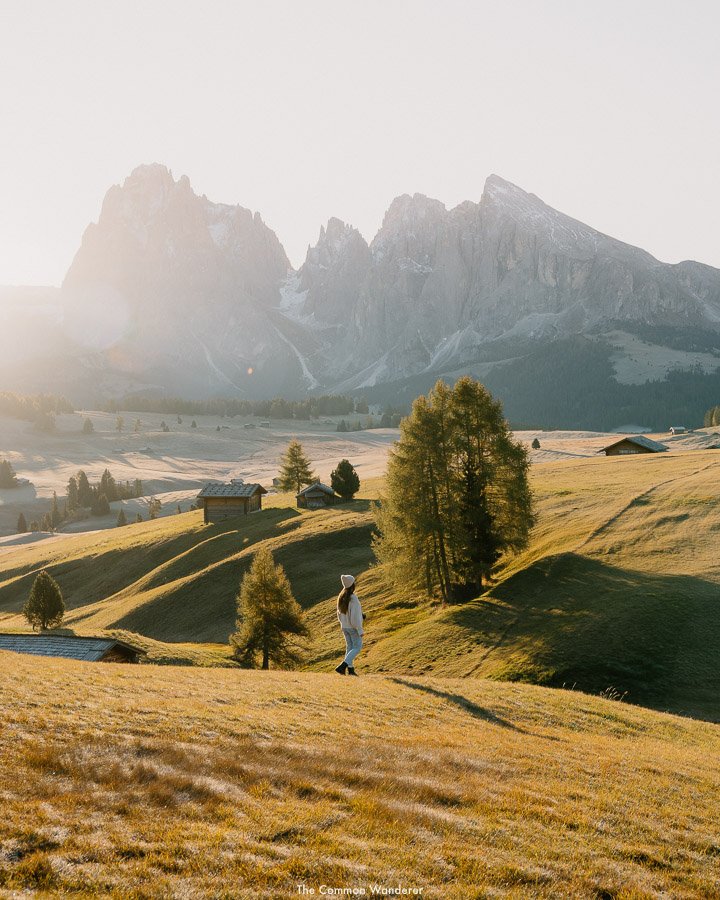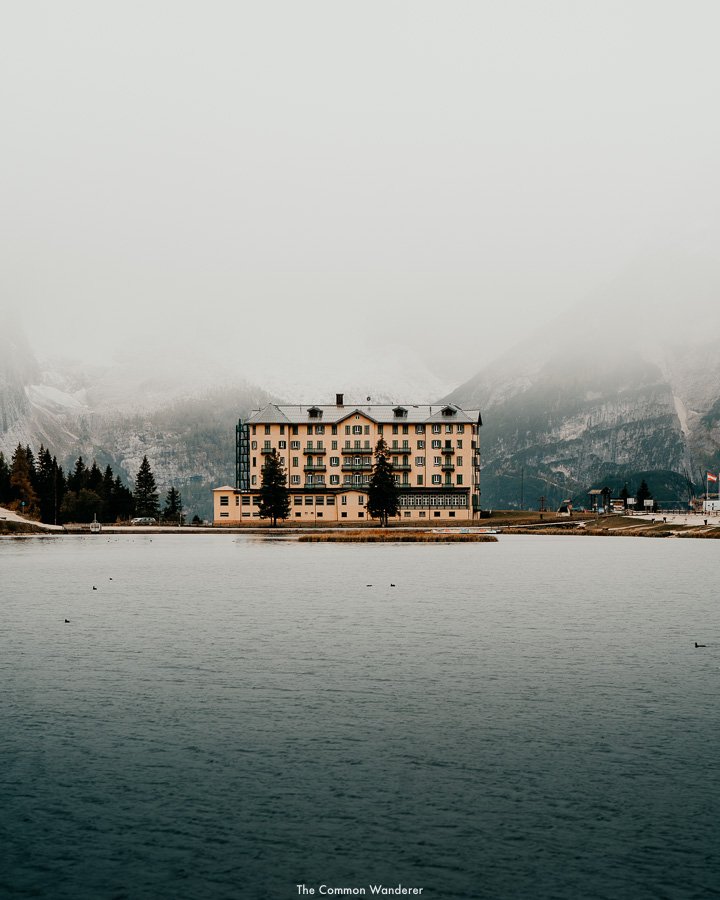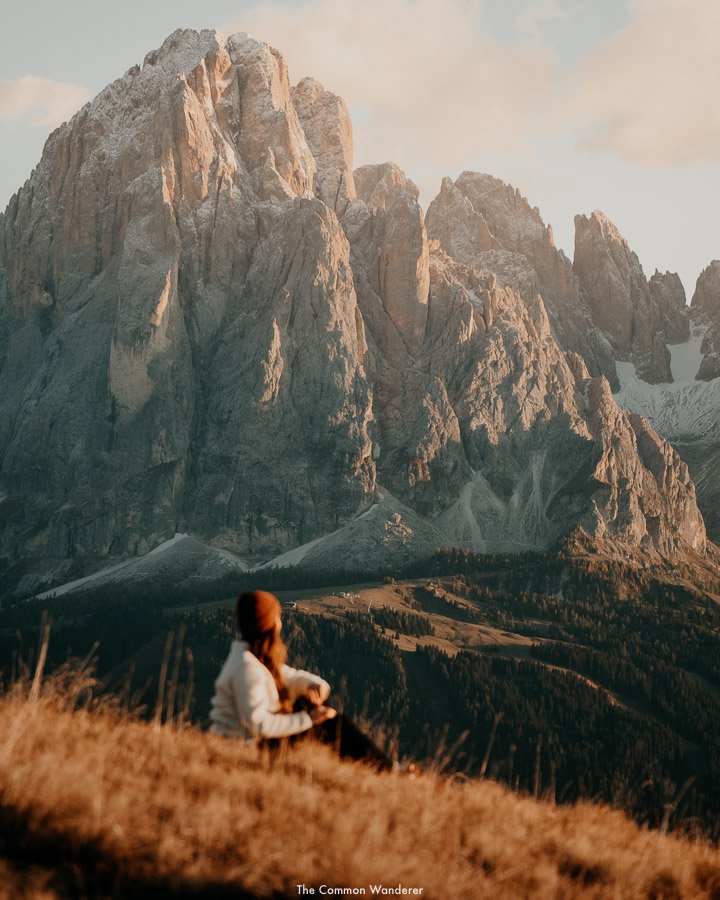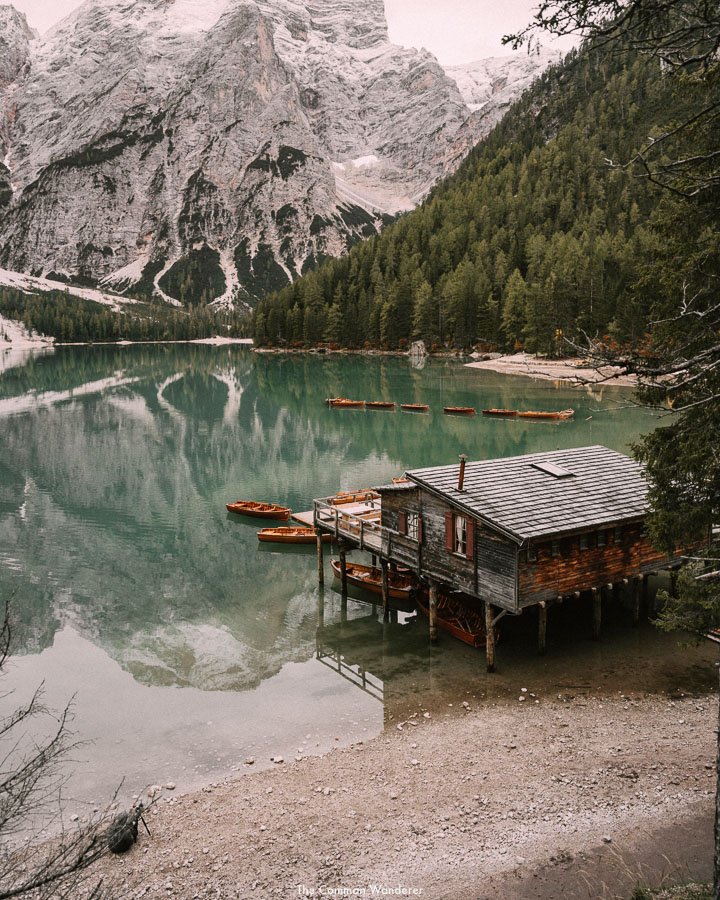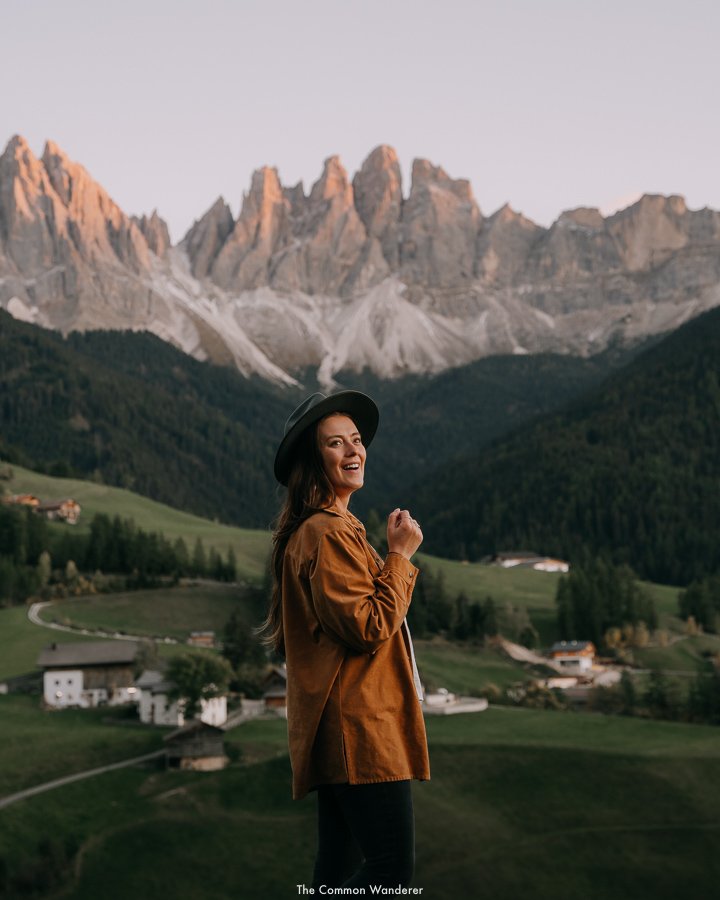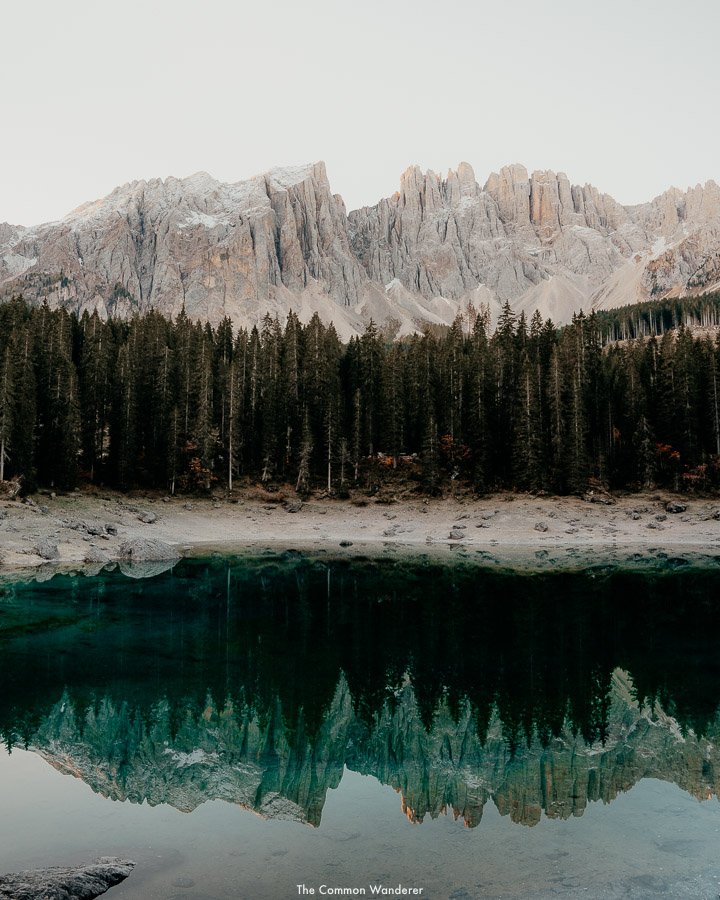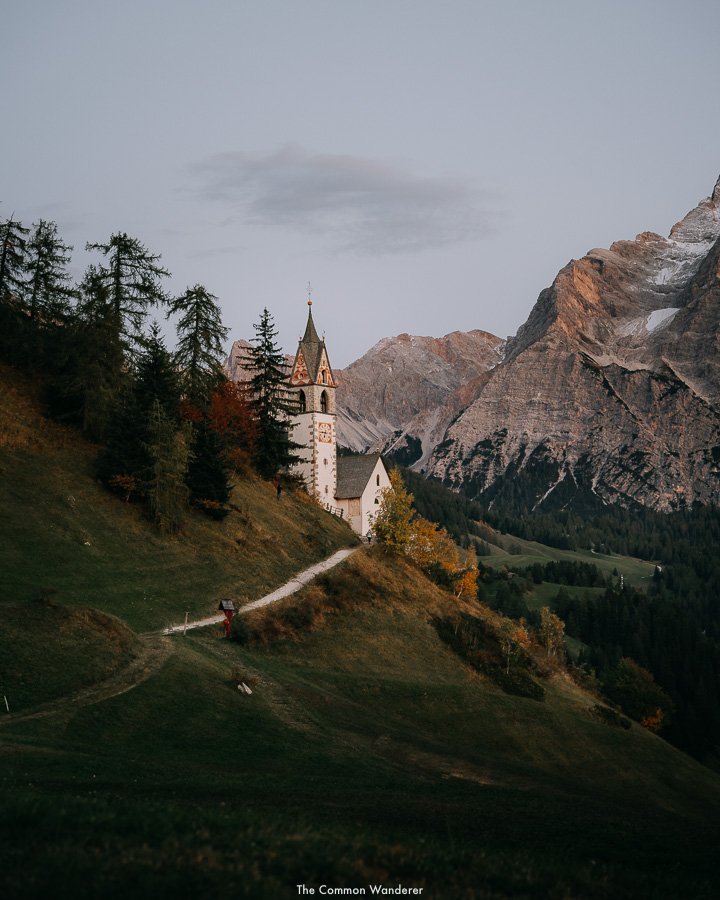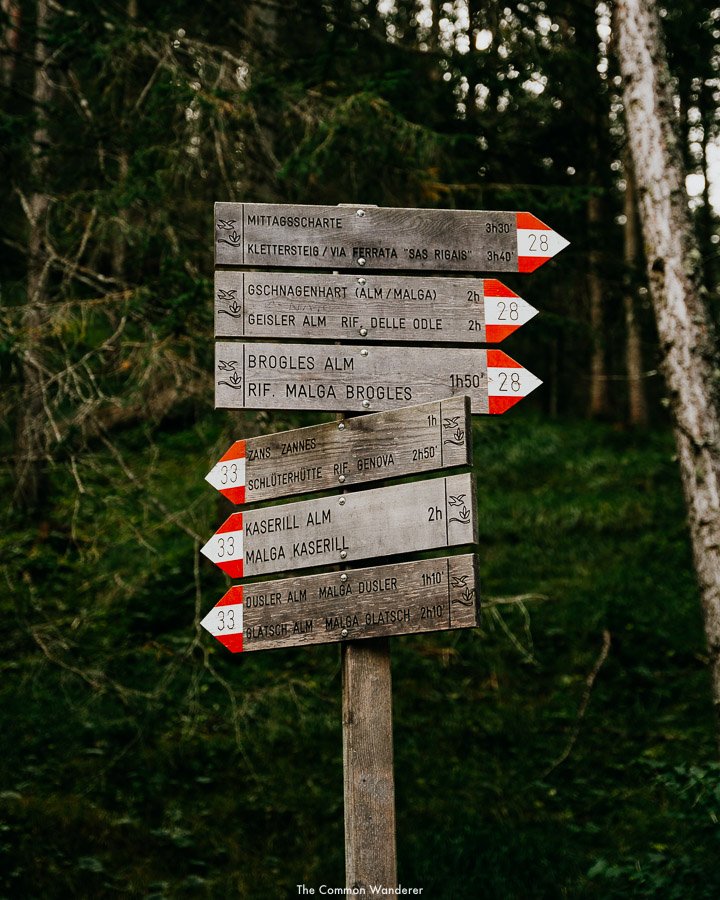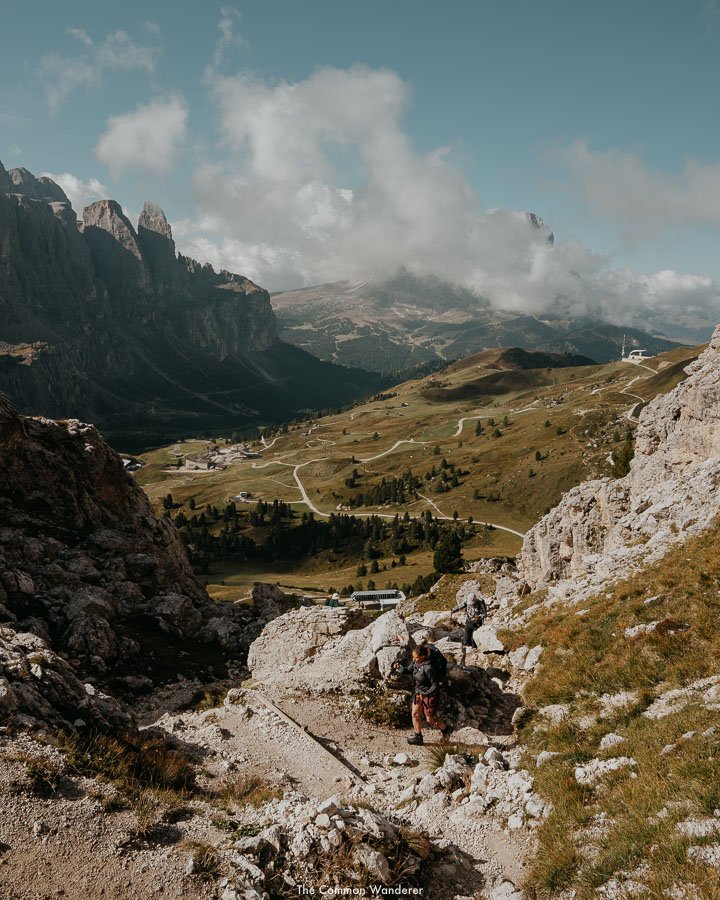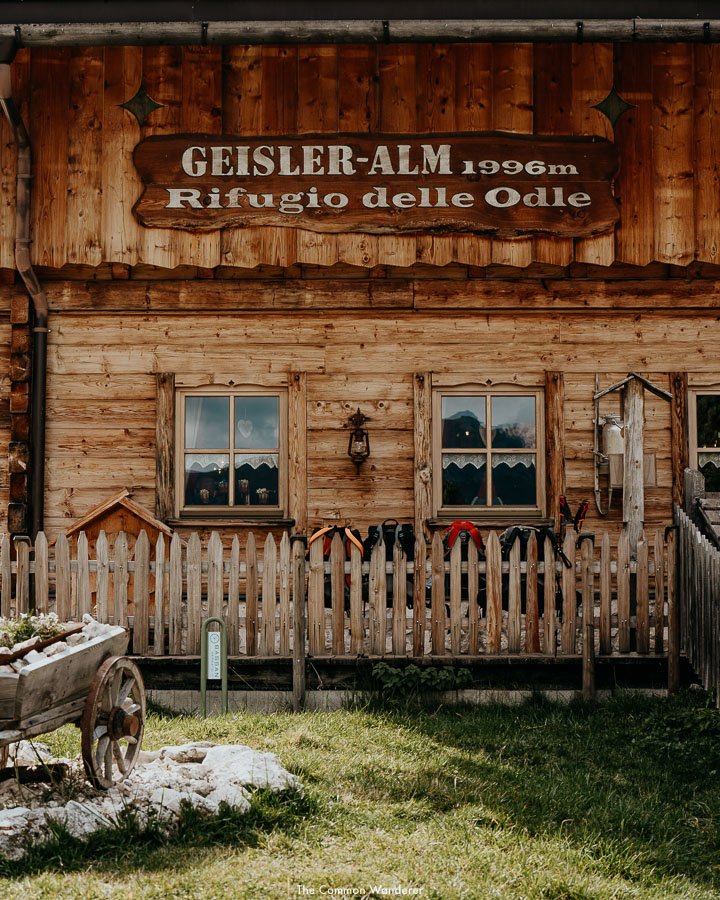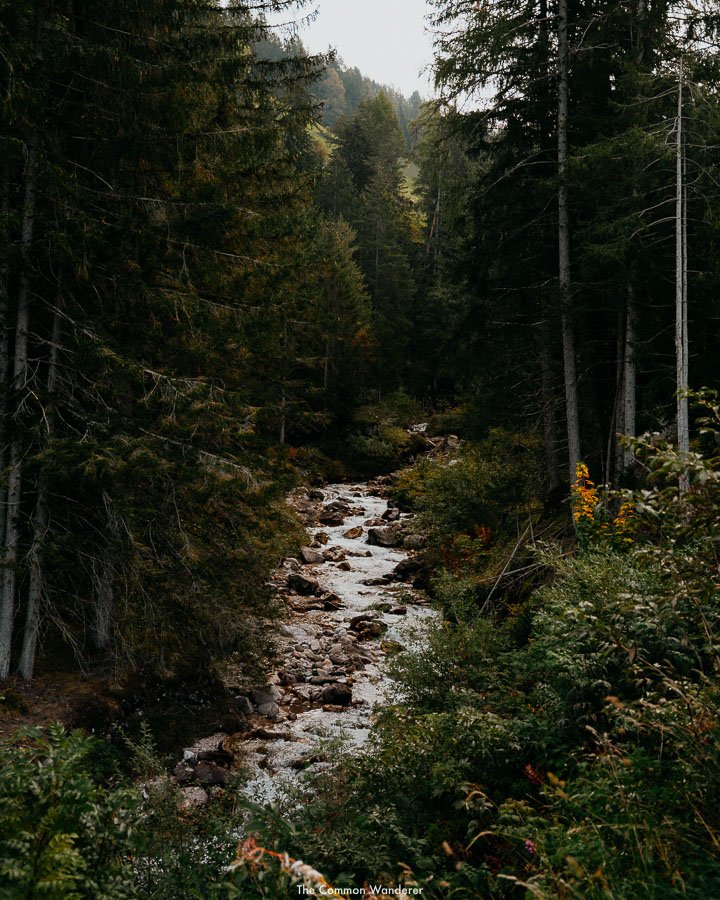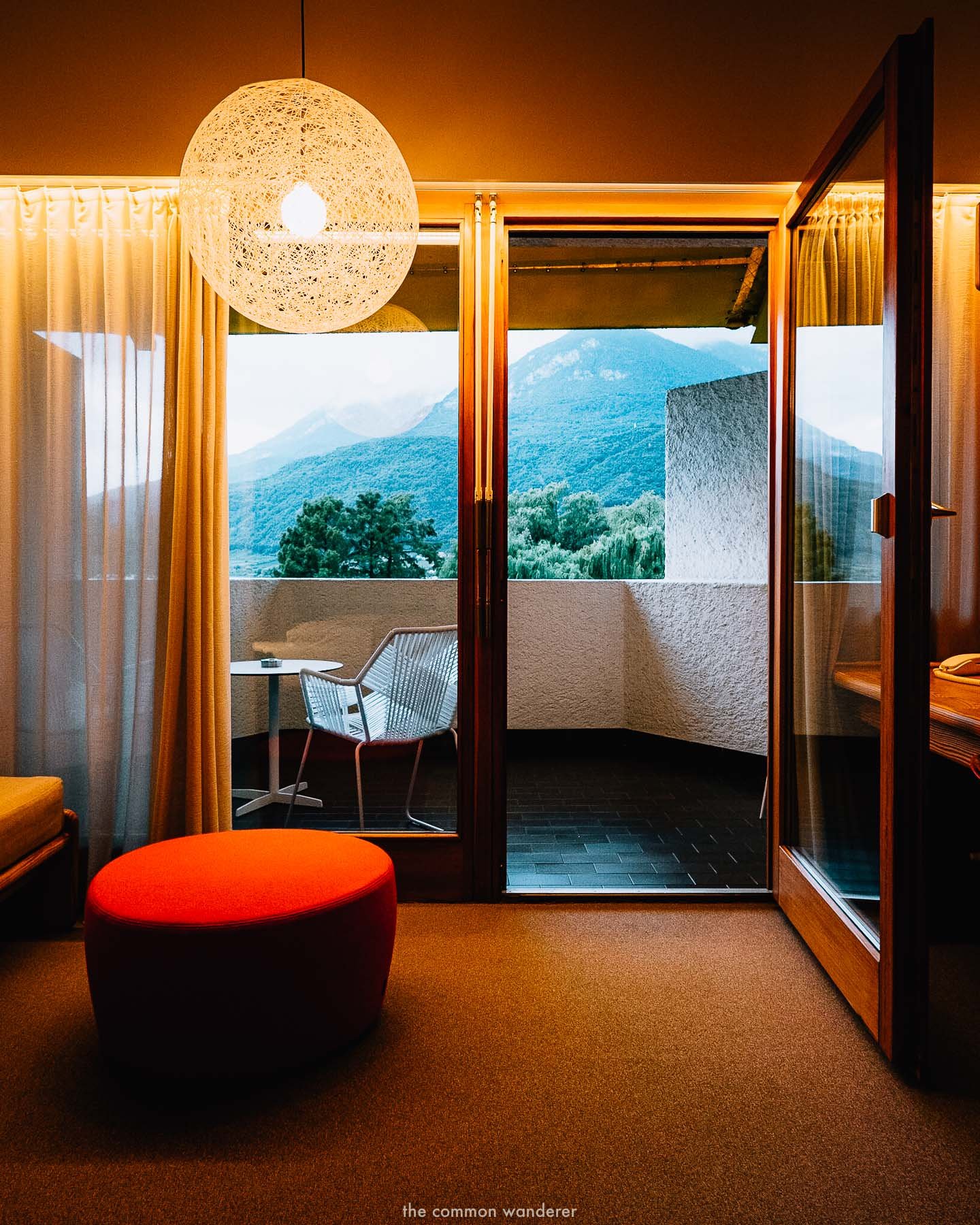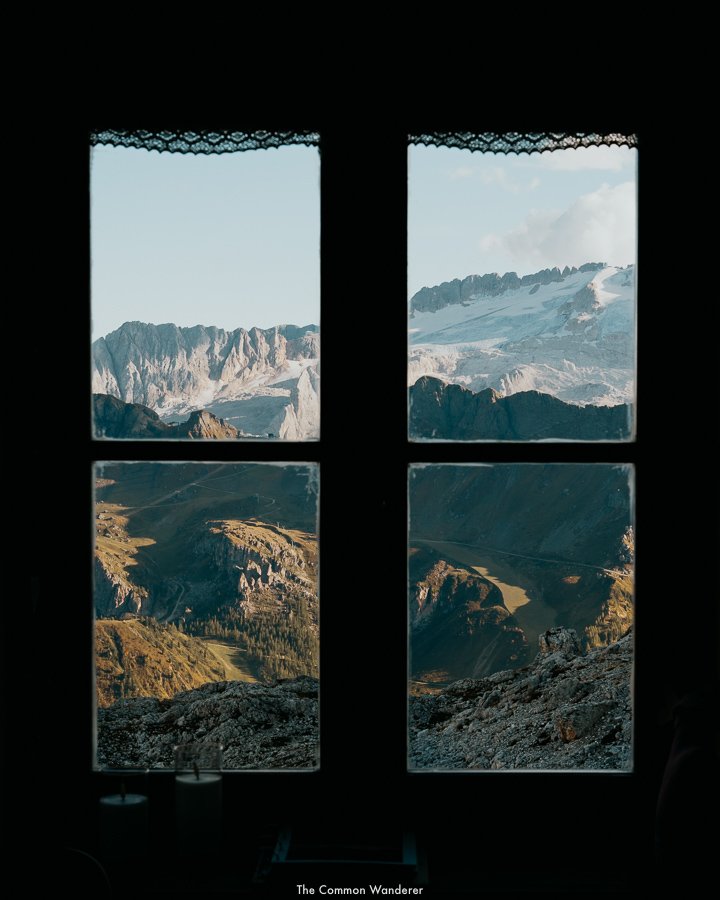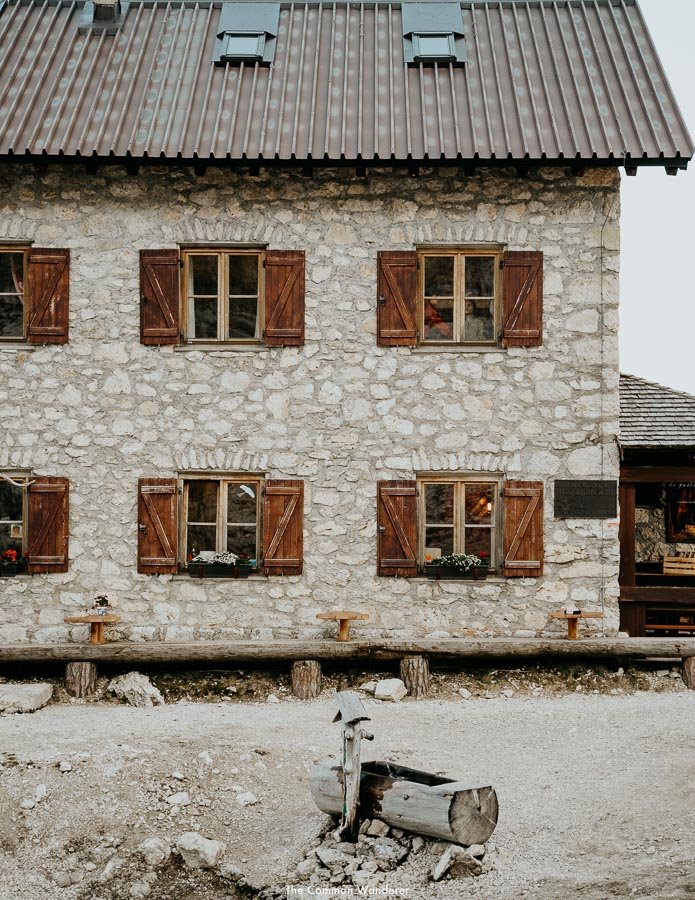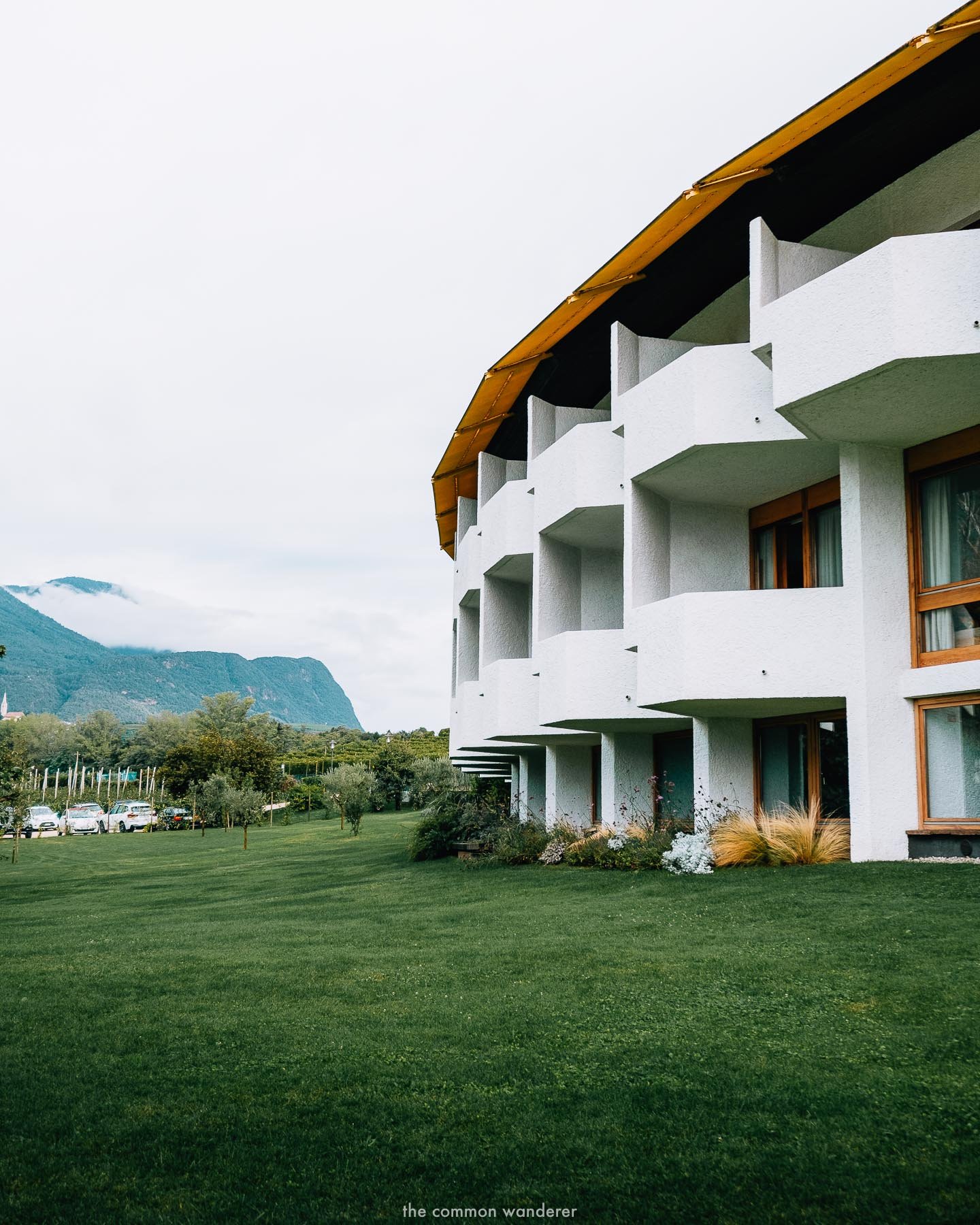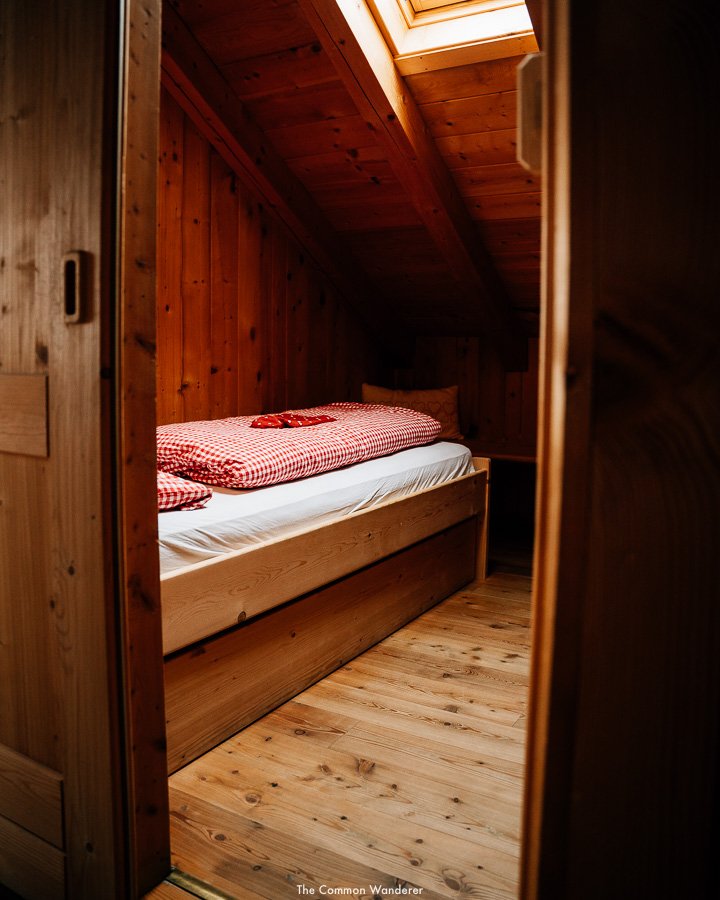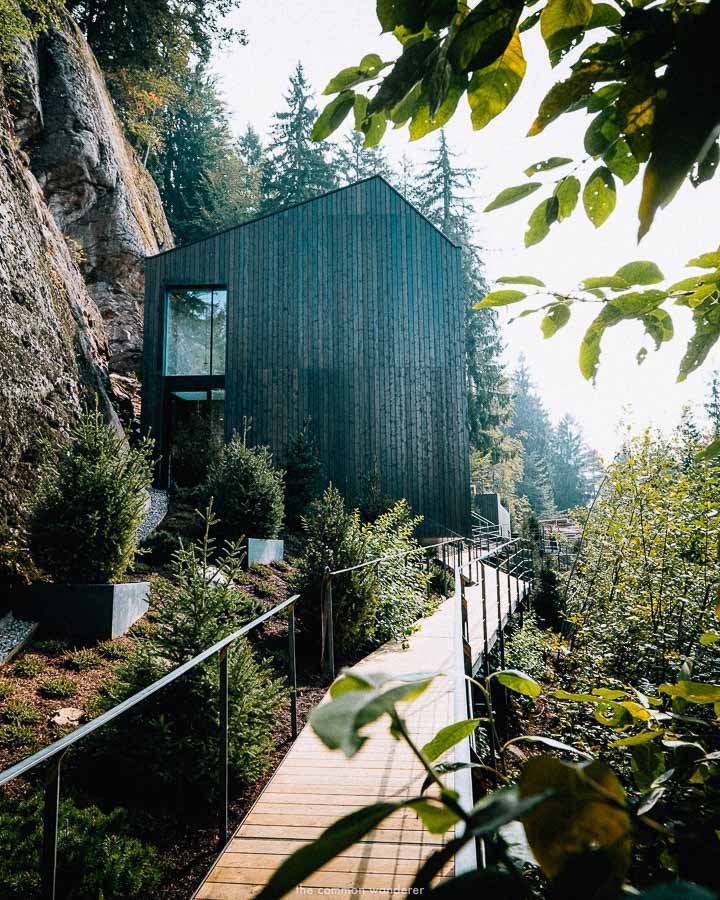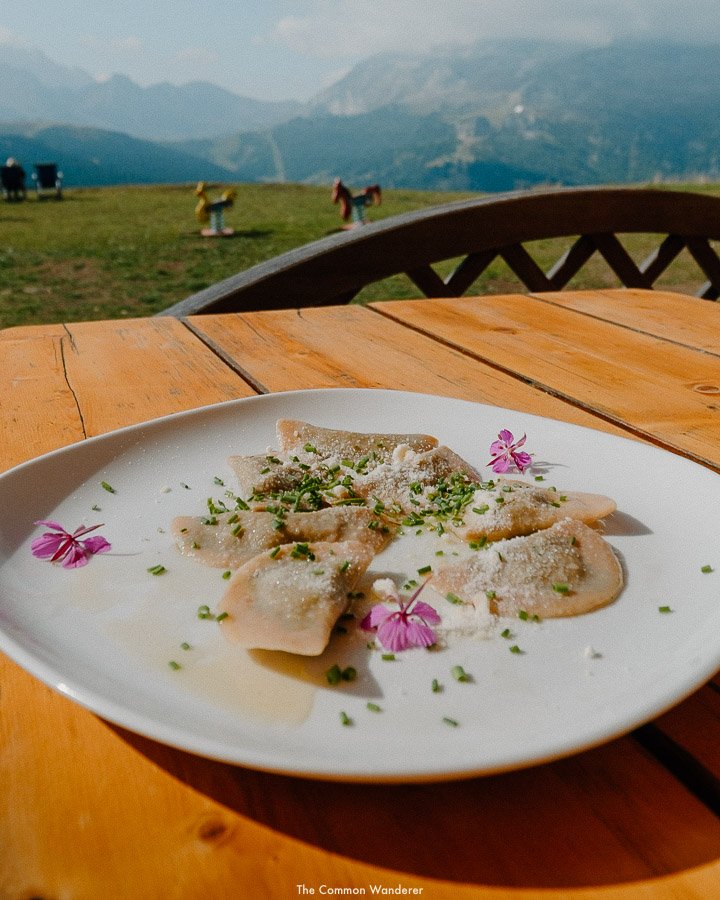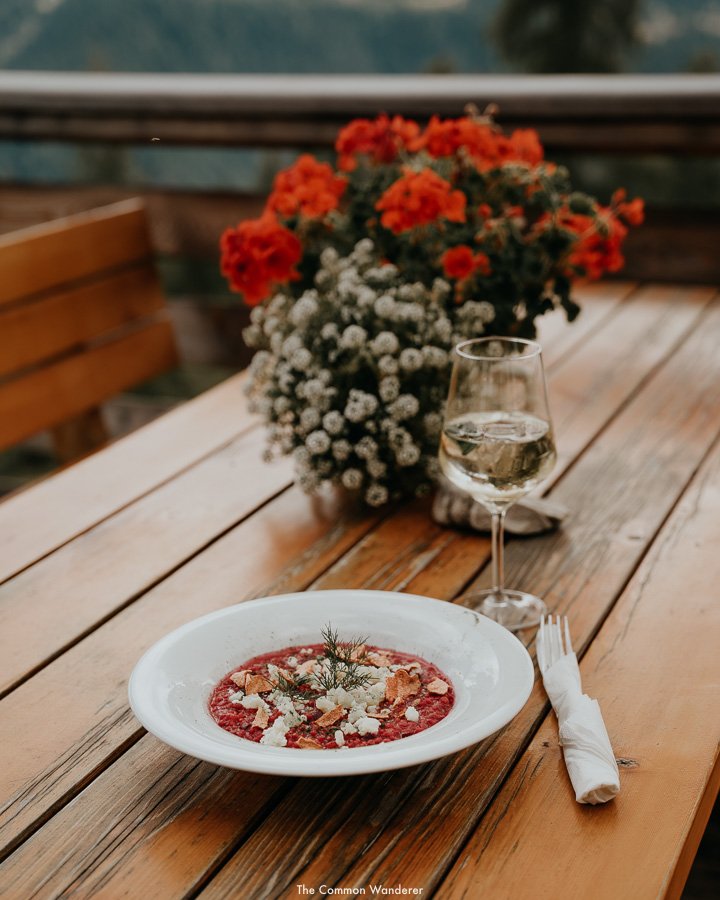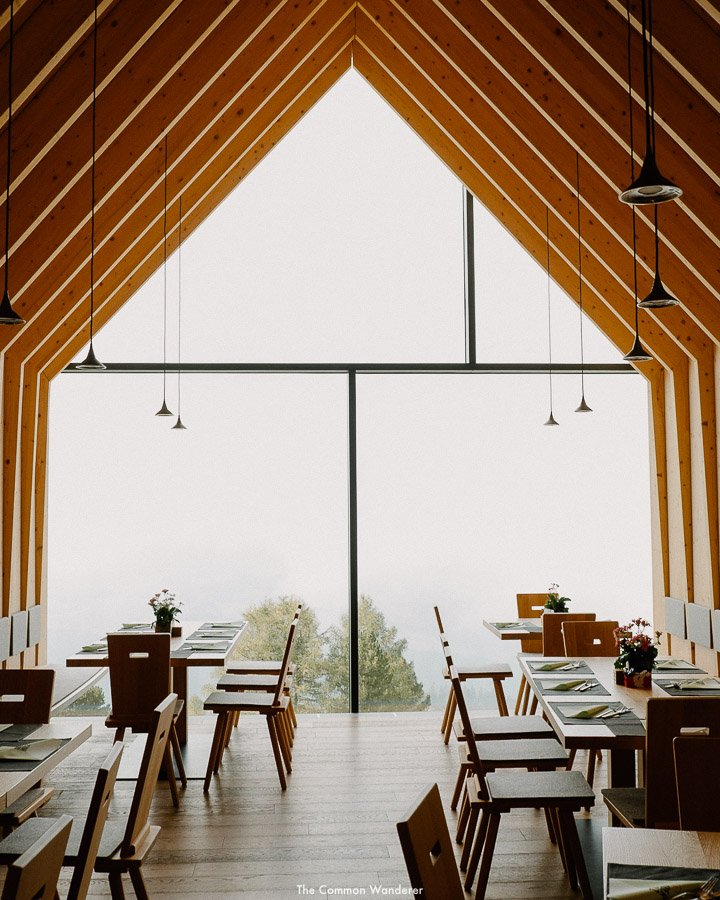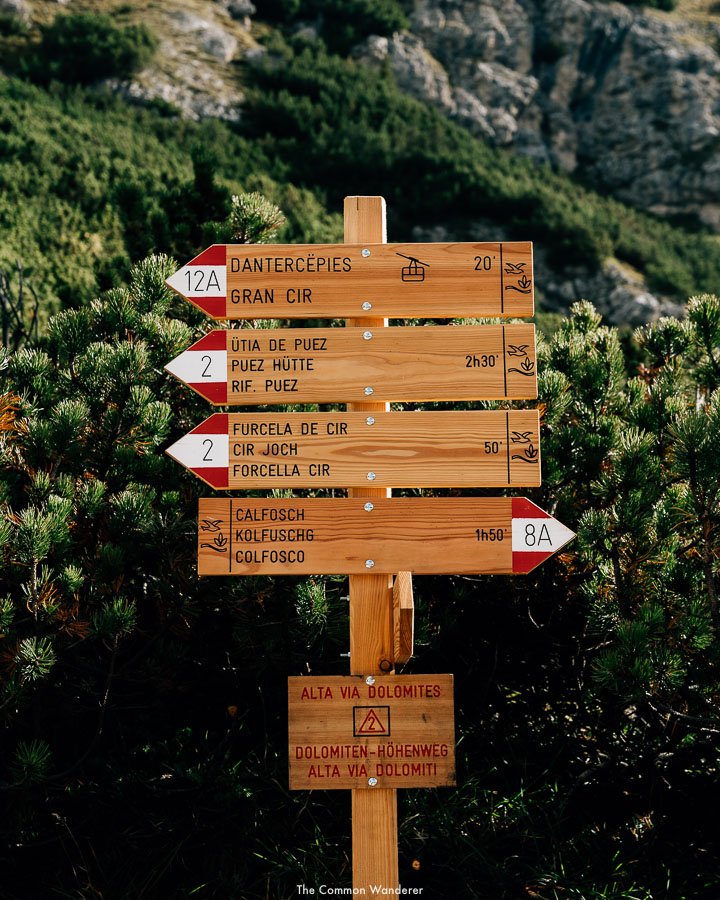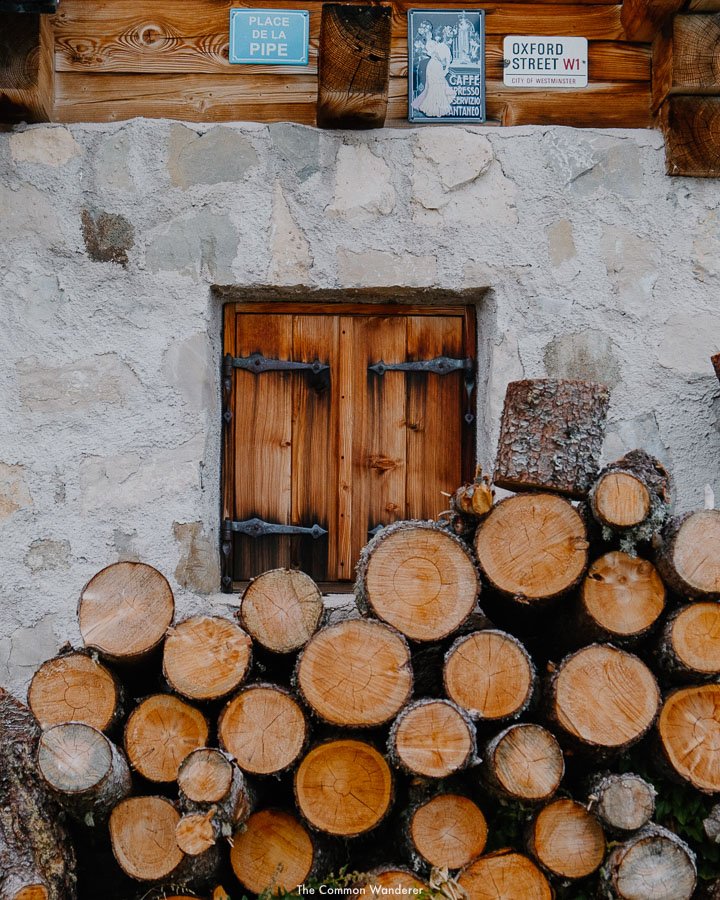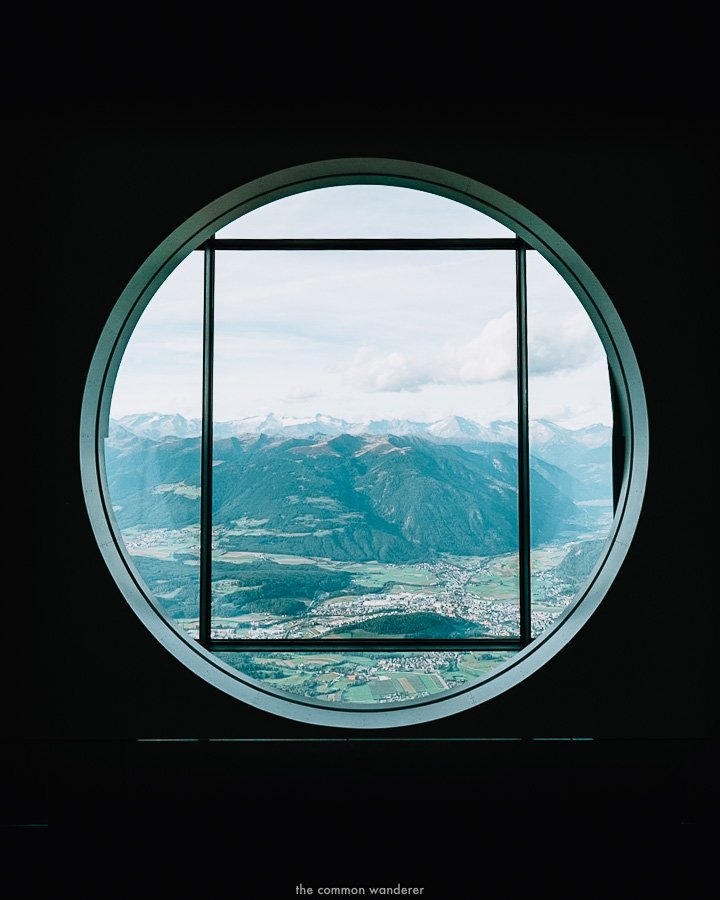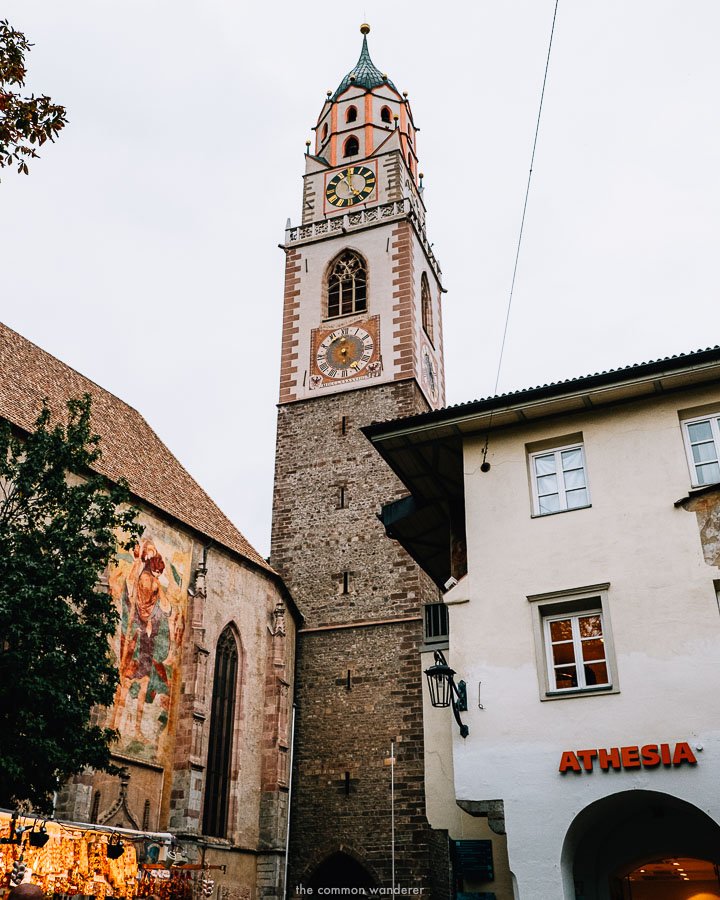Dolomites Travel Guide: Everything You Need To Know Before Visiting
Want to visit the Dolomites but don’t know how? Our Dolomites travel guide is filled with everything you need to know before you visit, including what to see and do, where to stay, and how to get there and get around + more.
The Dolomites are a dream destination for us.
In fact, we’d go as far as saying it’s pretty close to what heaven must be like; a mountainous wonderland with outrageous beauty at every turn, endless beer, hearty meals, super friendly outdoorsy-folk, and more than a dash of fresh air. In short, they’re perfect.
But visiting this mystical mountain playground can be daunting at first. At least it was for us before our first visit.
Wedged between Austria and Switzerland in the north of Italy, there’s no ‘easy’ way to get to the Dolomites, while all the major attractions seem to be scattered throughout the vast region.
Invariably, this leads to many questions; How long should I stay? How do I get there? Where should I base myself? Which season should I visit?
We’ve now visited the Dolomites five times, exploring each and every corner of the region, and we consider ourselves experts in the area, and that’s why we’ve put together this guide - to help answer each and every question you might have.
Our Dolomites travel guide is filled with everything you need to know before you visit, including what to see and do, our favourite hikes, how to get there and get around, where to stay, and what time of year to visit.
LOVE OUR PHOTOS? Edit like us with our European Summers Preset Packs, and mobile video filters, inspired by the warm hues and vibes of summers spent in Europe
DOLOMITES
TRAVEL
GUIDE
WHEN TO VISIT | Mid-July, Mid September - October
WHERE TO STAY | Ortisei, La Villa, Cortina d’Ampezzo, Bolzano
MAIN ATTRACTIONS | Lago di Braies, Tre Cime di Lavaredo, Seceda, Alpe di Siusi, Val di Funes
BEST HIKES | Tre Cime Loop, Seceda Ridgeline, Lago di Sorapis, Vajolet Towers, Gran Cir
HOW TO GET THERE | Fly to Venice, Innsbruck, Milan or Verona. Train or bus to Bolzano
DOLOMITES TRAVEL INFORMATION
WHERE ARE THE DOLOMITES (AND SOUTH TYROL)
The UNESCO World Heritage-listed Dolomites are located right in the north of Italy and span the regions of South Tyrol/Alto Adige-Trentino, Veneto and Venezia.
They’re basically wedged between the mountains of Austria and the plains of Italy which lead to the Mediterranean, which means contrasting landscapes and climatic conditions - picture Mediterranean-style vineyards overlooking the imposing mountain peaks.
The area has long been disputed amongst European powers - indeed it fell under Austrian rule for centuries before changing hands during WW1, when it was annexed by Italy; the current autonomous region is home to three official languages, German, Italian, and Ladin, the local indigenous language.
The area definitely feels more Austrian than Italian, but in our opinion, it's the best of two pretty amazing cultures.
The capital of the area is the beautiful city of Bolzano (Bozen), however main cities and towns include Trento, Bressanone (Brixen), Cortina d'Ampezzo and Brunico (Bruneck).
WHEN IS THE BEST TIME TO VISIT THE DOLOMITES
The Dolomites are one of those places that you could visit at any time of the year and still have a memorable experience.
HOWEVER.
It gets super busy in the summer. Like, overflowing car parks, full hotels and annoying traffic type busy.
So if you're like us, and like things a little quieter, the best time of year to visit the Dolomites is during September and early October.
During the shoulder seasons, the Dolomites are far less crowded, yet the weather is still comfortable (think crisp mornings and beautiful clear days). Although you won’t have the attractions or trails entirely to yourself, you will be able to thoroughly enjoy the stunning surroundings without the insane summer crush.
If late summer isn't possible, spring is also a wonderful time to visit (mid-June - July), as wildflowers cover the meadows with bright bursts of colour, and snow still covers the upper mountains, providing the most picturesque backdrops to your explorations.
…
It’s important to note that the Dolomites are a seasonal destination, and a lot of the towns and amenities (hotels, restaurants) shut down during the off-season, from mid-October - December, and between April - June.
This doesn’t mean you can’t visit the Dolomites during this period; it's just that you may struggle to find a full array of accommodation options, while gondola's, chairlifts and other transport won't be in operation.
HOW LONG SHOULD YOU SPEND IN THE DOLOMITES?
It goes without saying that however long you stay in the Dolomites, it's never enough.
We've visited the region on five occasions, and only now are we starting to scratch the surface of the overwhelming amount of attractions, hikes, mountain passes, towns and restaurants to visit.
Ultimately, it really depends on what your objectives are.
Keen to hike? Or are you just planning to hit up the best photography locations? Interested in slowing down and enjoying a slower stay, or are you keen on a bit of everything?
Realistically, 3 - 5 days is enough time to see all the major attractions. But you will be busy, and it will require a lot of driving. That's why we suggest spending at least 7-days in the Dolomites.
Our Dolomites itinerary is based on exploring the region for 7-days/one week in total, taking in a mixture of natural beauty, perfect day hikes, modern museums, and the best regional food.
If you’re planning to enjoy a few overnight hikes as well as the main sights, 10 nights might be a better option. If you’re planning to hit the region for photography only, five nights is achievable to see the Dolomites highlights.
THERE ARE TWO DISTINCT CLIMATIC AREAS, MEDITERRANEAN & ALPINE
South Tyrol and the Dolomites are made up of both high alpine peaks and Mediterranean climes, which provide wholly contrasting landscapes and climatic conditions.
Due to their position bordering Austria in the northernmost reaches of Italy, the colder climes of northern Europe are blocked, while warmer temperatures sweep off the Mediterranean, providing a super unique (and enjoyable) climate which allows for outdoor activities all year round, but with an especially long summer hiking season.
The region of South Tyrol enjoys over 300 days of sunshine a year, and in the vast valleys in and around Bolzano and Merano, vineyards and apple orchards abound - there are even palm trees and olive orchards which exist around picturesque Merano. While in winter, the alpine region is covered in snow, providing some of the best skiing conditions in Europe.
What does this mean for travellers to the region? Incredible alpine conditions in summer and winter, perfect for hiking and skiing, and a delightfully mild climate all year around in the valleys, perfect for exploring and outdoor activities.
SO PACK FOR ALL FOUR SEASONS
Here's the deal with South Tyrol and the Dolomites - while the climate is absolutely perfect (300+ days of sun!), the weather can (and will) change pretty darn quickly and you need to be prepared for it, even if you're just out for a short hike.
We can't tell you how many hikes we've been on in the region that have been affected by inclement weather - one minute, the skies are blue and the minute next thick clouds roll in out of nowhere, the temperature drops by 15 degrees and we're doing random dances to keep warm.
Long summer days hiking in the Dolomites can also lead to dehydration, so an adequate supply of water is essential (unless you find a rifugio with cold beer..!). Conversely, summer afternoons are known for their storms and can drop a deluge of water in just amount of short time.
All this means you need to pack accordingly, for all four seasons.
No matter what time of year you visit, here are a few essential items you need to pack:
A pair of good quality waterproof hiking boots
Shorts
Good quality hiking socks
Jumpers (fleece or woollen) or a light goose-down jacket (Mens North Face here, womens North Face here)
Two thermal tops (mens here, womens here) and bottoms
One Gore Tex jacket
One pair of waterproof pants (mens version here, womens version here)
Sunscreen
The Grayl water purifier and filtration bottle we use these to drink tap water every place we travel (including India and Nepal!)
THE DOLOMITES ARE EXPENSIVE BUT ALSO AFFORDABLE WITH THESE TIPS
We’re not going to lie, the Dolomites can be very expensive, and for many travellers, prohibitively so.
Accommodation, especially in popular areas, can exceed €200 per night and will likely be your largest cost. Eating a meal in a restaurant can set you back at least €30 per meal (primi + secondi), and public transport, such as cable cars/chair lifts, especially the popular ones (Seceda), can cost €30 a day.
And that’s not including car rental, fuel, parking, and other meals.
In short, it’s pricey here.
But there are ways to make your Dolomites holiday affordable. Below are our top tips to save while visiting the Dolomites:
Travel out of season | If you can, travel in June or from mid-September. Due to decreased demand, accommodation is heavily reduced during this period
Accommodation | Book accommodation in main towns, such as Ortisei, Val Gardena or Cortina d’Ampezzo, where you can get apartments/Airbnb for under €100 per night
Cook your own meals | If you rent an apartment/Airbnb, make full use of the kitchen. Visit the supermarket and buy breakfast, lunch and dinner options, as well as snacks for hiking. With this method, we saved at least €50 per day on food
Order a primi/entree (starter) | In Italy, pasta is generally served as a starter course, while heavier (mostly meat) dishes are your main course. We’ve found the starter is more than adequate to fill you up and will save you an expensive main course. Also, this leaves room for a cheaper (and delicious) dessert
Make use of free transport | Val Gardena, one of the most popular bases in the Dolomites, offers visitors free public transport (Mobil Card) as part of their hotel reservation (check when booking). This gives unlimited access to buses in the region for a period of 7 days
Buy multi-day chair lift passes | Many of the regions, including Val Gardena, sell multi-day lift passes, which provide excellent value for those planning on hiking and exploring
Hike | Yes, hiking in and out of some main attractions can be a huge money saver. For instance, the toll road fee for Tre Cime di Lavaredo is €30 per day; however, you can park at the base of the mountain and hike in. Sure, it’s a difficult hike, but if that’s what you’re in the Dolomites for, it’s an easy way to save
HOW TO GET TO THE DOLOMITES
How to get to the Dolomites is a very real question, and it’s certainly not the easiest destination to visit. However, with the right knowledge, it is manageable.
Despite its location high in the Alps of Northern Italy, the Dolomites are extremely well connected to major transport hubs which connect Italy with the rest of Europe, so the train or bus is your best bet, hopping off in Bolzano, Trento or Bressanone.
It’s worth noting that there's no major airport in the region, so either you'll have to make your way to one of the airports in northern Italy, western Austria or southern Germany.
…
The best (and most environmentally friendly) way to get to the Dolomites is via train, as the rail network throughout the region is exceptional, and trains stop regularly in Bolzano, the starting point for our Dolomites itinerary.
If you’re arriving from further abroad, flying may be the best option.
You can read our complete guide on how to get to the Dolomites, which includes all major transport options, here.
WHERE TO FLY IN/OUT OF THE DOLOMITES
Although it’s not possible to fly directly to the Dolomites, three airports exist within a three-hour drive to the main attractions, while three major international airports exist between 4-6 hours away.
We’ve arrived at both Venice and Munich Airports, and both were easy options to get to the Dolomites.
If flying, we suggest arranging a rental car from your arrival airport or catching a train/shuttle bus to Bolzano to start your Dolomites road trip.
The closest airports include:
Verona Villafranca International Airport - Italy | 2.5 hours
Marco Polo International Airport, Venice - Italy | 2.5 hours
Innsbruck - Austria | 2 hours
Bologna | 3 hours
Other major international airports within 4-6 hour radius include:
Zurich Airport – Switzerland | 5-6 hours
Malpensa Airport – Milan, Italy | 4-5 hours
Munich International Airport – Germany | 3-4 hours (requires an Austrian vignette)
TIP | There are several daily Shuttle buses to South Tyrol from the airports of Innsbruck, Salzburg, Munich, Treviso, Venice, Verona, Bergamo and Milan Malpensa. Learn more here.
TRAIN
If you’re travelling via train from Germany, Switzerland or Austria in the north, or Italy in the south, get off at Bolzano station, the main transport hub for the region.
For more information on local public transport, click here
TIP | If arriving by train, you can organise the South Tyrol shuttle to pick you up and drop you at your accommodation.
This initiative, which encourages people to leave their car at home and travel by more environmentally friendly means, allows travellers to book transfers to accommodation online at www.suedtiroltransfer.com/en.
HOW TO GET AROUND THE DOLOMITES
THE DOLOMITES ARE A GREAT PLACE FOR A ROAD TRIP...
If you’re a lover of a good road trip, the Dolomites are one of the best places to take one. The region is filled with an astonishing array of attractions, and the best way to see them is by car.
We’ve now enjoyed five separate road trips in the Dolomites, each to different regions, and it really is a mesmerising place to drive through; each bend in the road provides yet another epic view, each mountain pass more mesmerising than the other, and each valley with more picturesque towns to discover.
Having a car allows for freedom and flexibility to explore the region to its fullest, taking in the most iconic Dolomites attractions in a fairly affordable and efficient way.
Additionally, the roads in this part of Italy are exceptional, and while some of the driving leaves a lot to be desired (mostly speeding, so be careful), it really is one of the best places we’ve driven.
Due to the vast nature of the region and the obvious barriers (hello super tall mountains!), there’s no set road trip route. However, you’ll probably want to see all the main things to do in an easy and efficient tour, so we’ve put together an extensive Dolomites road trip for you, which you can read here.
Essentially, it’s filled with all the major sights and attractions, best day hikes, as well as some hidden gems you’re yet to read about (thank us later!).
…
Now for the practical part.
We’d recommend hiring a car in Bolzano, which is the gateway to your Dolomites adventures. Alternatively, you can hire a car at any arrival point in the surrounding regions and cities, including Venice, Verona, Innsbruck or Munich.
Expect to pay anywhere between £80 - £200 for 7-day car hire, excluding insurance (depending on car type). And don’t forget car rental insurance (purchase affordable yearly cover here).
TIP | Watch out for speed cameras within the region - they’re literally everywhere in Val Gardena and Alta Badia, as well as other parts of the Dolomites. They’re bright orange robots, but you’ll often get a warning prior to one coming up. Or, just don’t speed, ever.
BOOK | Check prices and dates for car rental here
READ | Our 7-day Dolomites road trip itinerary
...BUT PUBLIC TRANSPORT IS WONDERFUL
If you’re not keen to rent a car or have easy access to the Dolomites via the expansive European train network, the public transport system in South Tyrol is exceptional.
The region is very well connected via a system of buses, regional trains and cable cars, meaning that no matter where you wish to get to, be it Val di Funes, Lago di Braies, or even deep in the Funes National Park, you’ll be able to without too much hassle.
Organise yourself a South Tyrol Mobilcard, for one, three or seven days, and gain access to all the other transport options throughout the region.
Tickets can be purchased at tourist information centres, hotels, and ticket machines, and timetables can be found using südtirolmobil app.
THE DETAILS
What | South Tyrol Mobilcard
Cost | €15, €23, or €28 respectively for 1, 3 and 7 days
DOLOMITES ATTRACTIONS & HIKES
WHAT TO SEE AND DO IN THE DOLOMITES
The Dolomites are a land of jagged peaks, which thrust upwards from rolling alpine meadows, endless alpine lakes, incredible hiking, quaint medieval towns, luxurious wellness areas of equally luxurious accommodation, and some of the best cuisine anywhere in the world.
They’re a place where alpine and Mediterranean traditions collide, where influences from Italy and Austria blend together to create a wonderfully welcoming and enchanting destination for travellers (find out more about South Tyrol here).
We’ve visited the Dolomites many times, and are keen to share with you our favourite things to do in the Dolomites, plus our personal recommendations on where to stay and eat, how to get around, and more.
MAIN ATTRACTIONS
Seceda ridgeline
Lago Misurina
Paragliding above the Dolomites
TOWNS TO VISIT
Bolzano
Merano
Cortina d’Ampezzo
BEST MOUNTAIN PASSES
Passo Gardena
Sella Pass
Passo Giau
Passo delle Erbe
This just scratches the surface of Dolomites attractions, so we’ve written a comprehensive guide of things to do in the Dolomites, which you can read here. There’s information on what to see, where to eat and drink, accommodation and travel tips.
THE BEST HIKES IN THE DOLOMITES
The Dolomites have some of the very best hikes in the world.
In fact, most of our visits to the region have involved multiple epic hikes; waking before dawn to chase burnt orange sunrises from mountain summits, following ancient trails that wind around the rugged Three Peaks, meandering through green woods, alpine meadows, and past turquoise creeks - and of course, enjoying break times at cute little mountain cabins.
There are plenty of easy day walks (check out our guide to the best hikes in the Dolomites here) right through to full and multi-day hikes where you stop in Rifugios high in the mountains for alpine food and perhaps a cheeky schnapps, and lots of general fun with others.
For most first-timers, here are a few of our favourite day hikes in the Dolomites are:
TRE CIME DI LAVAREDO
These are the peaks that made the Dolomites famous; three wildly beautiful, postcard-perfect jagged monoliths as iconic to the area as the Eiffel Tower is to Paris that will undoubtedly have you awestruck as they tower above, clouds lingering at their peaks.
We’ve been to Tre Cime di Lavaredo (Drei Zinnen) four times now and would go back a million times more, we love it so!
The 10km loop from Rifugio Auronzo is a great short day hike for all levels of hiker, while history buffs can spend time exploring the WW1 tunnel systems left behind when these peaks were fiercely fought over in the Great War too.
Add on a short hike to the imperious Cadini di Misurina and you’ve got yourself on of the best day hikes in the Dolomites.
FANES NATIONAL PARK
We like to think of this area as our own little best-kept secret (though it’s probably not!), but while most visitors to South Tyrol head straight for the famous peaks of Tre Cime, Sella, or Sassolungo, it’s a mostly locals-only affair in beautiful Fanes National Park instead.
Starting at the quaint Pederü Berggasthaus, the trail snakes through pretty mountain pastures and meadows before beginning the ascent up a valley filled with pine trees and surrounded by jagged sand-coloured peaks that tower above. The scenery here is amongst our favourites in the whole of South Tyrol!
The 4-hour return hike can be pretty steep in parts, and definitely had us gasping for air at some points, but the feeling of being totally enclosed by these mountain giants is absolutely worth it. Alternatively, do as we did and hike up to the incredible Fanes Hütte and enjoy a night on the mountain as the locals do!
SECEDA
Seceda Peak is a photographer’s dream; it's crazy dramatic and almost always moody with a sheer drop to the valley below.
We hiked up on pre-sunrise one morning when the gloomy weather had blanketed the scene with a thick fog. Right as we were about to give up hope that the sunrise would make an appearance, the clouds began to part and the peaks of Seceda and the Fermeda Towers were revealed in all their glory. Worth it? You bloody bet!
The views from the top overlook many of the Dolomites’ most iconic and stunning peaks, including the Sella group, Sassolungo, and Mt. Schlern, as well as the pretty Alpe di Siusi meadow. For photography lovers and outdoor adventurers alike, sunrise here is not to be missed.
READ | We’ve written about our favourite short hikes in the Dolomites
DOLOMITES ACCOMMODATION & FOOD
CHOOSING YOUR DOLOMITES BASE IS IMPORTANT (WHERE TO STAY)
While distances between major Dolomites attractions don't look so far on a map, add in a few winding single-lane roads, a couple of narrow passes and many pull-over-I-need-to-take-a-photo moments and you’ve easily added an hour or two to your journey in no time.
To avoid spending more of your time driving between your intended destinations than exploring them, choose 2-3 base towns close to what you want to see and book multiple nights there to make the most of your stay.
Trust us, when you only have to drive 20 minutes back to your accommodation instead of 1.5 hours after a full day of watching the sunrise, sunset, and lots of hiking, you’ll be glad you made the decision!
Our picks of Dolomites bases are:
Val Gardena (Ortisei) | Close to Seceda, Alpe di Siusi and Val di Funes
Alta Badia (Colfosco)| Close to a huge array of hikes in the Parco Naturale Puez Odle including Gran Cir and Piz Boe. Read our Alta Badia guide here
Dobbiaco (Toblach) or Cortina d’Ampezzo | Close to Tre Cime di Lavaredo, Lago di Braies, Lago di Dobbiaco, Lago di Sorapis, and Passo Giau
Some of our recommended hotels in the region include:
BUDGET
GRANDPARENTS’ HOUSE, ORTISEI | A beautiful Bed and Breakfast in Val Gardena, with a huge bedroom and living space perfect for relaxing after a long day adventuring outside
GARNI EDERA | A small, cheerful family-operated guesthouse just a few minute’s walk from the Borest ski lifts
MID-RANGE
MOUNTAIN HOTEL MEZDÌ | This is as quintessential an alpine chalet as you can get; set in a quiet valley in Colfosco with traditional timber detailing, cute planter boxes full of pretty flowers, and epic mountain views from the floor-to-ceiling windows
HOTEL LAGO DI BRAIES | Located right on the shores of the Dolomites’ most famous lake, the three-star stone chalet might be a little dated in parts, but if you’re here for the lake, chances are you’re not actually that interested in spending much time indoors anyway, right?
SPLURGE
ROSA ALPINA | This beautiful family-owned hotel dates from 1850 and is full of old-world charm, with plenty of nods to local Ladin traditions, from local antiques and wood detailing to beautifully frescoed walls. Also the home of St Hubertus, the two Michelin-starred restaurant
ADLER MOUNTAIN LODGE | Set in the amazing Alpe di Siusi, this luxurious and light-filled hotel is filled with panoramic views so beautiful they’re like something out of a movie
For a more thorough overview of where to stay in the Dolomites, read our guide here. It runs through everything you need to know before booking in the region.
RELATED | Our guide on where to stay in the Dolomites
OUR RECOMMENDED DOLOMITES ACCOMMODATION BUDGET
We’re not going to lie, accommodation in the Dolomites comes with a decent price tag. If you’re planning to stay predominantly in hotels for the majority of your stay we recommend budgeting for a minimum of €100 per night.
Of course, Airbnbs can often be booked at a much cheaper rate, especially out of season.
EMBRACE THE WELLNESS CULTURE
Hot. Cold. Water. Air. At one with nature. Liberating. Centring.
Life in the Dolomites is very much a celebration of all the best things in life; an appreciation for natural beauty, total wellness of your mind, body, and soul, and embracing a slower, more meaningful existence.
We adore mountain culture in the Dolomites, and a huge part of that culture is the commitment to wellness; spas, saunas, massages, yoga, you name it - embracing the wellness culture in the mountains is one of the best things to do in the Dolomites.
But what is wellness exactly, and why is it so amazing?
Wellness is the act of practising healthy habits to better attain physical and mental health - and it’s noticeable here in the Dolomites. Nearly everyone you see if focused on living their best life, be it hiking, biking or even paragliding. Once the day’s activity is done, though, there’s a collective enjoyment of wellness - spas, saunas, stretching, massages, before an aperitif, then a slow and considered meal using incredible fresh produce.
And the best part - almost every hotel in the Dolomites is designed with health and wellbeing in mind, so you will likely have access to a huge array of wellness facilities wherever you stay.
So where is the best place to enjoy wellness in the Dolomites? Basically anywhere that you want it to be. For us, it’s walking through the dense forests below Seceda, before watching a golden sunset over the mountains.
Or watch the sunrise from Gran Cir with a coffee and chocolate in hand. Or enjoy a spa or sauna with an Aperol Spritz after a long day’s hike.
THE CUISINE IS INCREDIBLE
If Italy is one of the world’s culinary royals, then South Tyrol has to be the shining star in its crown (our humble opinion, but we’ll own it!).
Not only is it the country’s most decorated culinary province (it has 26 Michelin stars shared by 19 restaurants), South Tyrol’s cuisine melds together the very best of Italian food and the hearty alpine influences of Austria and Germany with centuries-old food traditions to create totally unique, mouth-wateringly delicious dishes that soothe the soul.
Basically, it’s heavenly alpine cuisine that makes you feel warm and fuzzy inside.
We’re talking fresh pasta, cheese straight from the region, the freshest of ingredients, and generous mountain meals that comfort and soothe aching muscles at the end of a long day outside - all accompanied by brilliant local wine, of course!
…
In the Dolomites, there’s a seasonal, farm-to-table approach to food, with a focus on sustainable food sourcing and practice at the heart of almost every meal. Here, produce is often foraged in the woods nearby or sourced from small-scale farms, and you truly get the sense that every dish you eat has been produced in harmony with the surrounding valleys and peaks.
Most hotels and alpine huts pride themselves on the quality of their restaurants and chefs, meaning good food can be found just about everywhere in the region.
What’s more, there are plenty of options for vegetarians (like us), the food here is generally really affordable, and no matter where you eat, it’s consistently good, every. single. time.
When you visit, we totally recommend you try these dishes:
Knödel (dumplings) | Bread dumplings mixed with local cheese. They’re delicious and hearty as hell
Schlutzkrapfen | Far more delicious than its name sounds, it’s ravioli type dumpling with spinach, ricotta and chives
Kaiserschmarrn | A fluffy shredded pancake served with applesauce and cream. Dessert heaven
And these are a few essential places to eat in the Dolomites:
Alpinn | Serves locally sourced produce with some of the best views from Kronplatz. Alpinn has a local mountain-to-plate philosophy, and their signature risotto with wild garlic and wood sorrel is to die for. Be sure to have a Mountain Spritz, made only with local ingredients!
Oberholz | Located in an architecturally designed mountain hut, Oberholz has a ridiculously good risotto with mushrooms and flowers straight from the mountain
Rifugio Ütia Bioch | Rifugio Utia Bioch, located on Piz Sorega, serves fresh South Tyrollean food overlooking Marmalada
THE CULTURE IS SUPER UNIQUE
Spend 24 hours in the Dolomites (South Tyrol) and you'd be forgiven for thinking you were in Austria, Germany or Switzerland.
Stereotypical Austrian wooden cabins dot the hills, resplendent with flowers in the summer months. Beautiful rolling vineyards and medieval castles dot the lower valleys. Local women and men dress in dirndl and lederhosen, singing centuries-old melodies. Knödel, schnitzel and strudel are served in almost all restaurants. The hotels are wooden and cosy and scream all things, Austrian - there are even cuckoo clocks on the wall.
And yet, you’re in Italy.
The region of South Tyrol has been involved in a proverbial tug of war for centuries, slinging between two powerhouse countries before becoming annexed by Italy at the end of WW1. Due to the rise of fascism in Italy, the area underwent an ‘Italianisation’, an effort to convert German speakers into Italians.
Despite the rather harmonious existence since WW2, South Tyroleans still feel Austrian - indeed over 62% of the local population speak German as their first language, with only 23% speaking Italian as their first language, and many still wish to be annexed back to Austria.
…
This heady mix of culture certainly leaves an imprint, though. In Bolzano and Merano, you’ll definitely feel the Italian influence, in the landscapes, the food, and the language. But the further you venture into the mountains, the more you’ll notice that Austrian influence, both linguistically and culturally.
It’s also worth noting the Ladin culture, a specific culture derived from Rhaetian people who have occupied these hills and valleys for millennia. Their unique language evolved from vulgar Latin spoken by the magistrates and soldiers at the time, and it gradually evolved into the Ladin language.
Ladin is rich in myth and legend, and its people have roots in mountain farming and craft work, which is evident throughout the region, and the language is spoken in both the Val Badia and Val Gardena valleys, by roughly 4 % (18,000) of the inhabitants. You can read all about Ladin culture here.
For culture vultures, there are heaps of museums, galleries and attractions that give you a much greater understanding of the region, which we highly recommend visiting.
These include:
The Ladin Cultural Museum, San Martino in Badia
South Tyrol Archealogical Museum, home to Otzi the Iceman, Bolzano
Forte Tre Sassi WW1 Museum, Falzarego
Galleria Lagazuoi WW1 battlefields, Lagazoui
MMM Corones Museum, Corones
Lumen Museum of Mountain Photography, Corones
All of this means that, while you are in Italy, it might not feel like it.
WHAT LANGUAGES ARE SPOKEN IN THE DOLOMITES?
Alto Adige vs South Tyrol (Süd Tirol). Tre Cime di Lavaredo vs Drei Zinnen. Alpe di Siusi vs Seiser Alm. Bolzano vs Bozen. Lago di Braies vs Pragser Wildsee.
If you’re confused by this don’t worry, we were too. There's a reason why most places in the Dolomites have two, and sometimes three, names.
As mentioned above, the Dolomites are nestled in the uppermost corner of Italy on the border with Austria, and a geopolitical tug of war between Austria and Italy after WWI meant that South Tyrol was annexed and became part of Italy, and thus, the fascist government pushed a policy of ‘Italianisation’. This meant German was banned, despite most of the province speaking German, and siding with Austrian culturally.
Thankfully, there’s no longer a decree to speak Italian, and rather the region embraces its three main languages - German, Italian and Ladin.
With this heady mix of language and culture in mind, it makes complete sense as to why there are two, and sometimes three languages used to name destinations or places.
The end result is that most places in the Dolomites have not just one, or two, but occasionally three (German, Italian, or Ladin) names for destinations — something to keep in mind whilst planning out your itinerary and plugging the name of your hotel into your car’s GPS system! Thankfully, most bus and train timetables list both names, as do hiking paths.
English speakers need not fear, though - the language is widely spoken throughout the region (better than most Australians, to be honest!), even if in some parts, it’s rather broken. We do, however, suggest learning some key phrases in either Italian and German or both!
RESPONSIBLE TRAVEL IN THE DOLOMITES
THE DOLOMITES AREN’T YOUR INSTAGRAM PLAYGROUND
The Dolomites are an incredible natural phenomenon perfect for photography and Instagram, but that doesn’t mean you have free reign to break rules, ruin natural environments and use them as your playground (read our responsible travel tips here).
Fortunately, many alpine areas are open to explore and get those Instagram bangers, but remember to keep to the paths, respect fences and signage, and be considerate of others around you.
Regarding drones, respect the usual rules of flying and be super careful - read more about flying your drone in the Dolomites here.
HOW TO TRAVEL RESPONSIBLY IN THE DOLOMITES
The Dolomites are a UNESCO World Heritage site, known for their dramatic peaks and pristine natural environment, but in recent years have become even more popular through Instagram and other social media apps.
This has lead to some pretty bad behaviour in and around the area, as well as the dreaded impacts of overtourism. Therefore, it’s important to remember a few key rules:
Bring a reusable water bottle | There is no need for a modern traveller to buy bottled water, ever. Purchase a water filtration + purification bottle (like our faves from The Grayl) and you will literally never need to purchase bottled water again.
Trek at the tail ends of the season | The Dolomites can get extremely busy in the height of summer, so we suggest trekking either side of the peak periods to avoid contributing to over tourism and environmental degradation.
It’s also a good idea to arrive early in the day to avoid crowds, which in our opinion makes the experience far better.
Respect the local environment and culture | This part of Italy, which borders South Tyrol and Verona communes, has a unique and rich culture, steeped in religious and historical significance.
Historical WW1 battles were fought here, and the remains can be seen everywhere. Respect these sights, and do not under any circumstance, remove anything from the national park.
Don’t litter | Whatever you do, don’t litter in this pristine natural environment. Where you can, avoid plastic altogether on your trek, and if you can’t, carry it out of the national park with you.
Pick up any trash you see | Although there’s not much rubbish in the Dolomites, the odd piece can be found. If you come across rubbish on your trek, collect it in a tote bag and take it off the trails with you to dispose of properly later.
Don’t drone | In some areas within the Dolomites, the use of drones is forbidden, unless you gain approval from the tourism board or national park. There are signs literally everywhere, so “i didn’t know” is not an excuse
TRAVEL INSURANCE | STAY SAFE IN THE DOLOMITES
If you can't afford travel insurance, you really can't afford to travel. As the current global situation has taught many people, things can go wrong anywhere in the world - and insurance is often the only way of mitigating any issues with minimal expense or stress for you.
Here are our recommendations, based on 8+ years of full-time travel:
FOR TRAVELLERS | HeyMondo - COVID-19 coverage, comprehensive travel + medical insurance, an app with 24-hour medical support, and no out-of-pocket fees. *Get 5% off your policy by booking through our link here.
FOR DIGITAL NOMADS | SafetyWing - COVID-19 coverage, comprehensive travel & medical, and policies can be purchased while already abroad.
CAR INSURANCE | Insurance4CarHire - a great annual car insurance policy
PLANNING A TRIP TO THE DOLOMITES SOON?
Check out these essential posts to help you have the best trip ever:
DOLOMITES | Summer in Alta Badia, Our 7-day road trip itinerary for the Dolomites, where to stay in the Dolomites, how to get to the Dolomites, A guide to Val di Funes, A guide to Alpe di Siusi
HIKES TO REMEMBER | 7 of the best day hikes in the Dolomites, including the famous Tre Cime De Lavaredo loop, Lago di Sorapis
SOUTH TYROL | 19 amazing things to do in South Tyrol during Summer, plus everything we love about the beautiful South Tyrol region
THE LAKES OF THE DOLOMITES | How to visit Lago di Carezza, our guide to Lago di Braies, and Lago di Sorapis
PHOTOGRAPHY | Love our photography? Grab the presets we use on every photo here
RESPONSIBLE TRAVEL | Responsible travel is important. REALLY IMPORTANT. Learn our top responsible travel tips to help you, your family and your friends travel more consciously around the globe
ECO-FRIENDLY PACKING ESSENTIALS | Don’t leave home without our favourite eco-friendly travel essentials
PLAN YOUR ULTIMATE DOLOMITES TRIP
Some of the links on this Dolomites Guide are affiliate links.
If you choose to purchase using these links, we receive a small commission at no extra cost to you. Please know that by using these affiliate links, you're directly supporting The Common Wanderer to stay wandering, the running costs of the site, and our ability to provide you with free content to help you on your travels.
That, and you're officially a legend.




